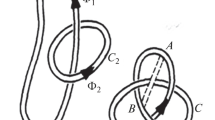Abstract
Helicity is a valuable dynamical concept for the study of rotating flows. Consequently helicity flux, indicative of the source or sink of helicity, owns comparable importance. In this study, while reviewing the existing methods, a mathematical relation between helicity and helicity-flux is introduced, discussed and examined. The computed values of helicity and helicity fluxes in an actual case, using the classical and this proposed method are compared. The down-stream helicity flux including sources and sinks of helicity is considered for the tropical storm Gonu that occurred over the coasts of Oman and Iran on June 2–7, 2007. Results show that the buoyancy, through the upper troposphere down to a height within boundary layer, is the main source in producing helicity, and surface friction from earth surface up to a height within boundary layer, is the main dissipating element of helicity. The dominance of buoyancy forcing over the dissipative friction forcing results in generation of vortex or enhancement of it after bouncing the land. Furthermore, the increase (decrease) of helicity results in an increase (decrease) in the height of the level in which maximum helicity flux occurs. It is suggested that the maximum helicity flux occurs at the top of the turbulent boundary layer, so that the height of boundary layer could be obtained.









Similar content being viewed by others
References
Angell JK, Pack DH, Dikson CR (1968) A Lagrangian study of helical circulation in the planetary boundary layer. J Atmos Sci 24:707–717
Betchov R (1961) Semi-isotropic turbulence and helicoidal flows. Phys Fluids 4:925–926
Etling D (1985) Some aspects of helicity in atmospheric flows. Beitr Phys Atmos 58:88–100
Hauf T (1985) Rotating clouds within cloud streets. Beitr Phys Atmos 58(3):380–398
Hide R (1989) Superhelicity, helicity and potential vorticity. Geophys Astrophys Fluid Dyn 48:69–78
Hide R (2002) Helicity, superhelicity and weighted relative potential vorticity. Useful diagnostic pseudoscalars? Q J R Meteor Soc 128:1759–1762
Kurgansky MV (2006) Helicity production and maintenance in a baroclinic atmosphere. Meteorol Z 15:409–416
Kurgansky MV (2008) Vertical helicity flux in atmospheric vortices as a measure of their intensity. Izv Atmos Oceans Phys 44:67–74
Lee WC, Wurman J (2005) Diagnosed three-dimensional axisymmetric structure of the Mulhall tornado on 3 May 1999. J Atmos Sci 62:2373–2393
Levina GV, Montgomery MT (2010) A first examination of the helical nature of tropical cyclogenesis. Dokl Earth Sci 434(1):1285–1289
Levina GV, Montgomery MT (2011) Helical scenario of tropical cyclone genesis and intensification. J Phy Conf Series. 318(7): IOP Publishing
Levina GV, Montgomery MT (2012) Helical organization of tropical cyclones. Preprint NI13001-TOD 47
Lilly DK (1986) The structure, energetic, and propagation of rotating convective storms. Part II: helicity and storm stabilization. J Atmos Sci 43:126–140
Mininni PD, Pouquet A (2009) Helicity cascades in rotating turbulence. Phys Rev E 79:026304. doi:10.1103/PhysRevE.79.026304
Mininni P, Pouquet A (2010a) Rotating helical turbulence. Part I. Global evolution and spectral behavior. Phys Fluids 22:035105. doi:10.1063/3358466
Mininni PD, Pouquet A (2010b) Helical rotating turbulence. Part II. Intermittency, scale invariance and structures. Phys Fluids 22:035106. doi:10.1063/3358471
Moffatt HK (1969) The degree of knottedness of tangled vortex lines. J Fluid Mech 35:117–129
Moiseev SS, Sagdeev RZ, Tur AV, Khomenko GA, Yanovsky VV (1983a) A theory of large-scale structure origination in hydrodynamic turbulence. Sov Phys JETP 58:1149–1157
Moiseev SS, Sagdeev RZ, Tur AV, Khomenko GA, Shukurov AM (1983b) Physical mechanism of amplification of vortex disturbances in the atmosphere. Sov Phys Dokl 28:925–928
Molinari J, Vollaro D (2008) Extreme helicity and intense convective towers in Hurricane Bonnie. Mon Weather Rev 136:4355–4372. doi:10.1175/2008MWR2423.1
Molinari J, Vollaro D (2010) Distribution of helicity, CAPE, and shear in tropical cyclones. J Atmos Sci 67:274–284. doi:10.1175/2009JAS3090.1
Montgomery MT, Nicholls ME, Cram TA, Saunders AB (2006) A Vortical Hot Tower Route to Tropical Cyclogenesis. J Atmos Sci 63(1):355–386
Montgomery MT, Smith RK (2010) On an analytical model for the rapid intensification of tropical cyclones. Q J R Meteorol Soc 136:549–551. doi:10.1002/qj.573
Montgomery MT, Smith RK (2014) Paradigms for tropical cyclone intensification. Aust Meteorol Oceanogr J 64:37–66
Moreau JJ (1961) Constantes d’un îlot tourbillonnaire en fluid parfait barotrope. C R Acad Sci Paris 252:2810–2812
Nolan DS (2011) Evaluating environmental favorableness for tropical cyclone development with the method of point-downscaling. J Adv Model Earth Syst 3:M08001. doi:10.1029/2011MS000063
Pichler H, Schaffhauser A (1998) The synoptic meaning of helicity. Meteorol Atmos Phys 66:23–34
Pouquet A, Mininni PD (2010) The interplay between helicity and rotation in turbulence: implications for scaling laws and small-scale dynamics. Phil Trans R Soc A 368:1635–1662. doi:10.1098/rsta.2009.0284
Smith RK, Montgomery MT, Zhu H (2005) Buoyancy in tropical cyclones and other rapidly rotating atmospheric vortices. Dyn Atmos Oceans 40:189–208
Xu Y, Wu R (2003) The conservation of helicity in Hurricane Andrew (1992) and formation of the spiral rainband. Adv Atmos Sci 20(6):940–950
Zhang JA, Drennan WM, Black PG, French JR (2009) Turbulence structure of the hurricane boundary layer between the outer rainbands. J Atmos Sci 66(8):2455–2467
Author information
Authors and Affiliations
Corresponding author
Additional information
Responsible Editor: S. T. Castelli.
Rights and permissions
About this article
Cite this article
Farahani, M.M., Khansalari, S. & Azadi, M. Evaluation of helicity generation in the tropical storm Gonu. Meteorol Atmos Phys 129, 333–344 (2017). https://doi.org/10.1007/s00703-016-0465-x
Received:
Accepted:
Published:
Issue Date:
DOI: https://doi.org/10.1007/s00703-016-0465-x




